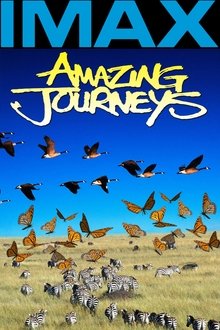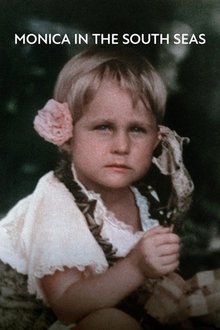Lumière's documents life in Palestine.
Related Movies

Amazing Journeys (1999)
By land, by air, and by sea, viewers can now experience the struggle that millions of creatures endure in the name of migration as wildlife photographers show just how deeply survival instincts have become ingrained into to the animals of planet Earth. From the monarch butterflies that swarm the highlands of Mexico to the birds who navigate by the stars and the millions of red crabs who make the perilous land journey across Christmas Island, this release offers a look at animal instinct in it's purest form.

Girls Taking Time Checks (1904)
Almost 200 women file by a device on the wall from which they take their time checks. A man runs half-way across the screen at the end of the film.

Panorama of Machine Co. Aisle (1904)
A camera on an overhead crane travels down a large, long aisle where men are shown working on large machinery on either side. Carts carrying equipment are shown traveling on rails down the aisles. There are also men walking in the aisles. From Bitzer's Westinghouse Works series.

Testing Large Turbines, Westinghouse Co. Works (1904)
On the left of the screen, a small group of men lift the top off of what appears to be a turbine with a crane and continue to check the machine, tightening various parts with wrenches. On the right side, a few men appear to be testing the workings of what may be a turbine.

The Arrival of a Train at La Ciotat (1897)
A group of people are standing along the platform of a railway station in La Ciotat, waiting for a train. One is seen coming, at some distance, and eventually stops at the platform. Doors of the railway-cars open and attendants help passengers off and on. Popular legend has it that, when this film was shown, the first-night audience fled the café in terror, fearing being run over by the "approaching" train. This legend has since been identified as promotional embellishment, though there is evidence to suggest that people were astounded at the capabilities of the Lumières' cinématographe.

Berlin: Symphony of a Great City (1927)
A day in the city of Berlin, which experienced an industrial boom in the 1920s, and still provides an insight into the living and working conditions at that time. Germany had just recovered a little from the worst consequences of the First World War, the great economic crisis was still a few years away and Hitler was not yet an issue at the time.

Nanook of the North (1922)
This pioneering documentary film depicts the lives of the indigenous Inuit people of Canada's northern Quebec region. Although the production contains some fictional elements, it vividly shows how its resourceful subjects survive in such a harsh climate, revealing how they construct their igloo homes and find food by hunting and fishing. The film also captures the beautiful, if unforgiving, frozen landscape of the Great White North, far removed from conventional civilization.

Cavalcade of Dance (1943)
Ballroom dancers Veloz and Yolanda perform the various dance fads of the first half of the twentieth century.

Monica in the South Seas (2023)
Finnish filmmaker and artist Sami van Ingen is a great-grandson of documentary pioneer Robert Flaherty, and seemingly the sole member of the family with a hands-on interest in continuing the directing legacy. Among the materials he found in the estate of Robert and Frances Flaherty’s daughter Monica were the film reels and video tapes detailing several years of work on realising her lifelong dream project: a sound version of her parents’ 1926 docu-fiction axiom, Moana: A Romance of the Golden Age.

Dr. Cook at Copenhagen (1909)
On 4 September Frederick Albert Cook (1865-1940) arrived in Copenhagen on the ship 'Hans Egede'. He received a hero's welcome as the first man to set foot on the North Pole. He was greeted by the king, and given an honorary doctorate at the University of Copenhagen. Only a few days later, however, his endeavour was questioned, and in December the University rejected Cook's documentation. Carl Th. Dreyer is seen as one of the journalists taking notes. (DFI)

The History of the Civil War (1921)
The epic story of the Russian Civil War (1918-21): the White Terror, the counterrevolutionary uprisings, the guerrilla war, the Kolchak front, the Wrangel front and the Kronstadt rebellion. Chaos and violence, devastation and death.

Butterfly Dance (1896)
A very graceful dance with voluminous draperies, by Annabelle Moore, well-known on the metropolitan stage.

The Story of Petroleum (1923)
Reel 1, an oil field is located, drilled, brought in, and pumped. Shows the Garber Field in Oklahoma. Reel 2 shows how pipe is laid and cleaned. One section crosses the Red River. Includes views of an oil camp and of a casinghead gasoline extraction plant. Reel 3, oil is distilled at a refinery. Reel 4, wax is removed from oil, processed, and prepared for distribution. Oil products are carried in tank cars, trucks, barges, and ships.

No Jardim (1896)
In a sunny open air setting with a background of high, deep foliage trees, and a white-walled storeyed house, an acrobat with light shirt and trousers and white plimsolls is doing acrobats in a trapeze in the center of the area. Behind it, a pair of men in similar dress seem to be carrying barbells from one place to the other, rather then exercising with them.

Time Stood Still (1956)
Time Stood Still is a 1956 Warner Brothers Scope Gem travelogue, filmed the previous year in Dinkelsbühl, and presented in the wide-screen format of CinemaScope, directed by André de la Varre. It was nominated for an Academy Award for Best Live Action Short Film at the 29th Academy Awards.

Crabs and Shrimp (1930)
Jean Painlevé is interested here, with the help of Eli Lotar, in crabs and shrimps. He is particularly interested in detailing their anatomy and observing their mating and fighting behavior.

Mystery of the Nile (2005)
Filmed in IMAX, a team of explorers led by Pasquale Scaturro and Gordon Brown face seemingly insurmountable challenges as they make their way along all 3,260 miles of the world's longest and deadliest river to become the first in history to complete a full descent of the Blue Nile from source to sea.
